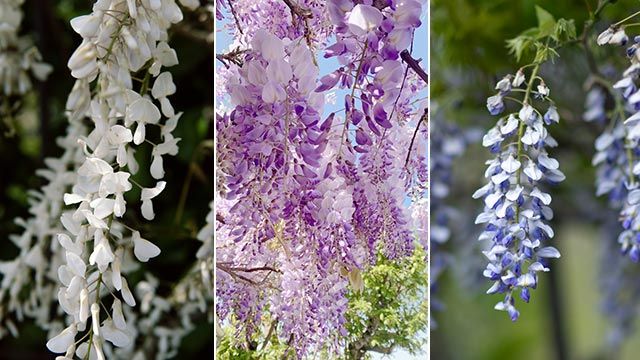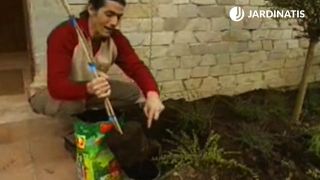Table of contents
General characteristics
- Common name Wisteria or wisteria
- Scientific name : Wisteria sinensis
- Origin: China and Japan
- Family : Fabaceae
- Exhibition: Semi-shade or sun
- Location : Exterior
- Flowering: Late winter - early spring
- Temperature: very resistant, even to frost
- Irrigation: Regular
- Credit memo: Boost during the flowering season
Wisterias or wisteria are very vigorous and long-lived climbing plants We must take into account its great vigor and final volume to avoid problems of scale in the future.
 Wisteria or wisteria flowers
Wisteria or wisteria flowers
Every spring they develop wonderful flowers in shades of white, blue and purplish pink before the leaves grow.
The pink variety is characterized by a rather tangled bush with many fine and very vigorous stems. The blue variety, however, is much more compact.
Wisteria, like bougainvillea, are climbing plants that, due to their great vigor, require a large volume of soil.
Wisteria cultivation
If the we grow in a container, This will result in a stunted growth and insignificant flowering, so that is not advisable.
The spectacular aroma emanating from its bouquets of flowers will conquer more than one, although it will be more or less intense depending on the variety. Its fruits are very showy velvety pods.
One of the requirements of wisteria is that it be planted in deep soil, as it has very aggressive branching roots due to its vigorous growth.
This climbing shrub prefers acid soils Although it can be cultivated in any soil, being careful with soils that are too humid or too warm (which cause iron chlorosis).
Wisteria or wisteria planting (step by step)
Iñigo Segurola explains the step-by-step for planting wisteria directly in the ground, not in a container. We have attached a chain to the ceiling that will serve us as a guide for wisteria.
 The first thing to do is to hollow out the soil, make a planting hole and introduce some substrate.
The first thing to do is to hollow out the soil, make a planting hole and introduce some substrate.
 The wisterias that we normally buy in the nurseries are cultivated in this type of substrate, therefore, when using the same, our plant will root much better. It must be taken into account that its root system is very vigorous.
The wisterias that we normally buy in the nurseries are cultivated in this type of substrate, therefore, when using the same, our plant will root much better. It must be taken into account that its root system is very vigorous.
 We attach the chain to the ground, plant the wisteria and we wind the branches around the chain Finally, water well.
We attach the chain to the ground, plant the wisteria and we wind the branches around the chain Finally, water well.
Wisteria care, pests and diseases
Watering should be regular, more frequent in the early years of the plant and fertilize every year with special attention during the flowering season.
Wisteria can be multiplied by layering, cuttings, grafting or seeds. The latter and the wisteria pods are toxic if eaten.
 Wisteria or wisteria seeds
Wisteria or wisteria seeds
The most common diseases are leaf spots caused by fungus, powdery mildew, rust or virosis .
The most common pests affecting wisteria or glycine are aphids, mealybugs, or the cutter bee of leaf.
Wisteria is a climbing plant whose growth habit consists of. develop vigorous shoots that are becoming entangled in the supports that the plant encounters on its way, and can even climb to the top of the trees.
Your growth is very curious: In the Northern Hemisphere it is always growing to the left, while in the Southern Hemisphere the growth is the other way around, to the right. Did you know that?
The growing stems are long and the flowers appear on the small lateral stems, or darts, that the main stem leaves behind as it continues its ascent towards the sky.
Wisteria pruning
To achieve maximum flowering, we must to promote the development of as many lateral shoots or darts as possible. This is achieved by resorting to the continuous clamping of the growth stalks.
 Pruning of wisteria, pear and abelia trees
Pruning of wisteria, pear and abelia trees
Once we have reached the desired size with the wisteria, the pruning will consist of keeping the growth contained, cutting all the vigorous stems that are coming out and leaving all the lateral stems in charge of the flowering.
If the wisteria is at ease, it will grow incessantly. To maximize flowering, it is usually advisable to prune three times a year. During spring, summer and autumn, i.e. in the middle of the plant's growth.
1. Formation pruning: guide the new vigorous shoots by the structure and remove those on the stem.
2. Maintenance pruning: Reduce all new shoots to five to ten centimeters in length.
3. Maintenance pruning: Reduce all new shoots to 5 centimeters in length.

